Offering students an array of electives grants them the chance to delve into diverse school activities they might otherwise miss out on. As students in grades 5-8 undergo continuous growth and transformation, it falls upon the school to furnish them with engaging and enjoyable challenges.
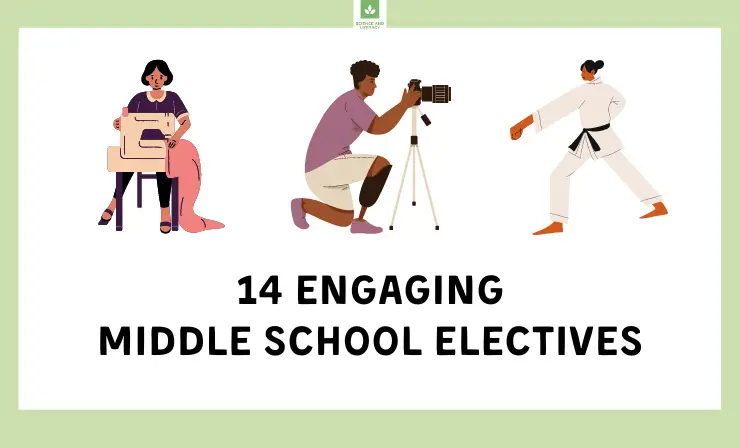
From middle school musicals to orchestra participation or enriching field trips, these choices can elevate the school year to the forefront of students’ preferences for electives. The allure of electives is undeniable, and some students even relish the opportunity to take the lead in guiding these alternative classes:
(Thread) My kiddo is now in middle school, and she’s leading an elective class in building DIY air purifiers for the entire school. /1 pic.twitter.com/WzlsR5xgjf
— Heath Haussamen (@haussamen) July 27, 2022
Presented below are 14 distinct middle school elective options, each promising an array of extra performance chances:
| Elective | Difficulty level | Cost | What does it teach |
| 1. Knitting | Low | Low | Teaches basic knitting techniques, including how to create various stitches and patterns to make fabric and clothing items from yarn. |
| 2. Chess | Low | Low | Teaches the rules and strategies of chess, a two-player board game that challenges critical thinking, problem-solving, and foresight. |
| 3. Gardening | Low | Low | Teaches students about planting, cultivating, and maintaining plants, along with understanding ecosystems, sustainability, and the importance of nature. |
| 4. Yoga | Low | Low | Introduces students to yoga postures, breathing exercises, and mindfulness techniques to promote physical fitness, flexibility, and stress relief. |
| 5. Cooking | Low to Middle | Middle | Teaches basic cooking skills, meal preparation, and kitchen safety, helping students become more self-sufficient and knowledgeable about food. |
| 6. Sewing | Low to Middle | Middle | Teaches basic sewing techniques, including how to use a sewing machine and hand-sew, allowing students to create simple fabric projects. |
| 7. Theatre | Low to Middle | Middle | Teaches acting, stagecraft, and production elements, helping students develop confidence, public speaking skills, and an appreciation for the performing arts. |
| 8. Photography | Middle | Middle to High | Teaches the fundamentals of photography, including how to use cameras, compose shots, and manipulate lighting to create visually appealing images. |
| 9. Visual Art | Middle | Middle to High | Teaches various art techniques and mediums, allowing students to explore their creativity through drawing, painting, sculpture, and more. |
| 10. Foreign Languages | Middle | Middle to High | Teaches the basics of a foreign language, including vocabulary, grammar, and cultural aspects, aiming to develop communication skills in a different language. |
| 11. Tae Kwon-Do | Low to Medium | Low | Teaches the Korean martial art of Tae Kwon-Do, including self-defense techniques, physical fitness, discipline, and respect. |
| 12. Engineering | Low to Medium | Low | Introduces students to basic engineering principles, problem-solving, and hands-on projects that involve designing and building structures or devices. |
| 13. Microscopy | Low to Medium | Middle to High | Introduces students to microscopy and the microscopic world, teaching them how to use microscopes and understand cell structures and other small-scale phenomena. |
| 14. Orchestra | High | High | Teaches students how to play musical instruments as part of an ensemble, helping them develop musical skills, teamwork, and an understanding of music theory. |
So, let’s begin!
1. Knitting
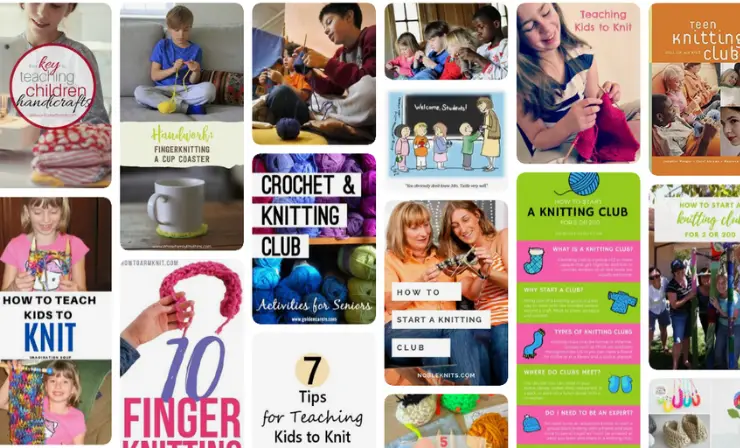
Difficulty Level: Low
Cost: Low
What Does It Teach: Teaches basic knitting techniques, including how to create various stitches and patterns to make fabric and clothing items from yarn.
In the quest for the ideal middle school elective, students often find themselves on the lookout for an escape from the rigors of regular coursework, a sanctuary where they can foster their creativity. Enter the world of knitting—an ancient skill that promises to be both captivating and soothing. Nestled within the threads and loops of this timeless art form lies a haven for those seeking respite from the hustle of middle school life.
Knitting, with its rhythmic and repetitive motions, offers a unique blend of relaxation and creativity. As students learn the art of transforming yarn into intricate patterns, they not only unravel the mysteries of crafting but also find solace in the process. The gentle clinking of needles and the gradual emergence of beautiful creations act as a counterpoint to the demands of academia.
Beyond the tangible products born from their hands, students will discover a sense of accomplishment and pride in mastering this age-old craft. Knitting serves not only as a creative outlet but also as a reminder that even in the midst of bustling classrooms, a haven of tranquility can be found. As they embrace the art of knitting, students embark on a journey of self-discovery and artistic exploration that promises to weave a tapestry of calm amidst the vibrant tapestry of middle school experiences.
You can also watch this video about a knitting club:
2. Chess
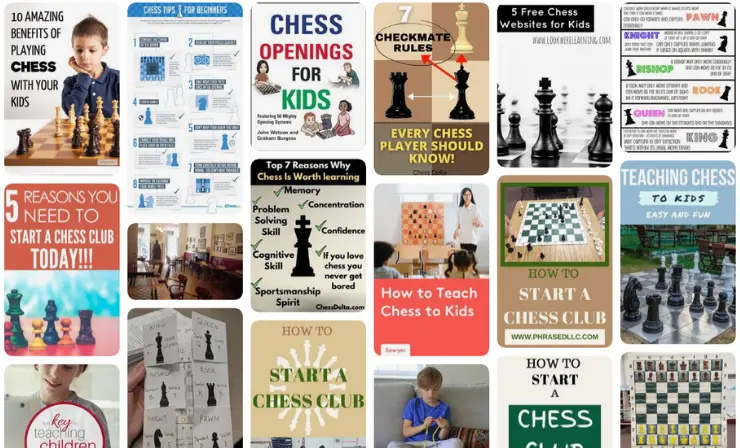
Difficulty Level: Low
Cost: Low
What Does It Teach: Teaches the rules and strategies of chess, a two-player board game that challenges critical thinking, problem-solving, and foresight.
Chess stands as an enduring favorite among middle school electives, captivating young minds with its intricate strategies and dynamic gameplay. Yet, its potential as a powerful learning tool reaches far beyond the chessboard’s boundaries. In the realm of this noble game, students are offered an opportunity not only to engage in a captivating competition but to cultivate valuable study skills that will serve them well beyond the classroom.
As students immerse themselves in the world of chess, they navigate the strategic terrain, honing their critical thinking and problem-solving abilities. Each move becomes a calculated decision, fostering foresight and planning—a cornerstone of effective study techniques. The mental gymnastics required by the game encourage meticulous analysis and concentration, skills that seamlessly translate into other academic pursuits.
Beyond the allure of victory or checkmate lies a space where resilience is nurtured. Wins and losses alike are embraced as part of the learning process, fostering determination and a growth mindset. Chess, with its rich history and endless possibilities, unfurls a tapestry of cognitive and character development.
Amidst the allure of capturing opponents’ pieces, students inadvertently capture the essence of strategic thinking. The chessboard transforms from a mere playing field into a landscape of skillful learning. Middle schoolers embarking on this elective embark on a journey that extends well beyond the sixty-four squares—a journey of intellectual empowerment and the mastery of study skills that are bound to shape their educational voyage ahead.
Here’s a video outlining the process of initiating a chess club at school:
3. Gardening
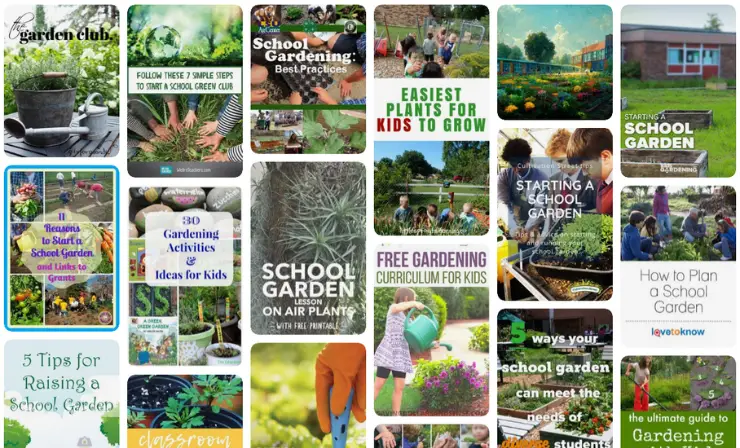
Difficulty Level: Low
Cost: Low
What Does It Teach: Teaches students about planting, cultivating, and maintaining plants, along with understanding ecosystems, sustainability, and the importance of nature.
Embarking on the journey of gardening, middle school students find a serene and joyful escape within the confines of the classroom. The act of nurturing life from seed to bloom offers a unique blend of tranquility and delight, creating a haven of natural beauty amidst the academic bustle. Here, both boys and girls unite to transform a mere class period into a canvas for cultivating a vibrant, living garden.
As young gardeners meticulously tend to soil and seedlings, they immerse themselves in the art of growth—a process mirrored in their own academic and personal development. The act of nurturing and caring for plants fosters patience, responsibility, and a profound appreciation for the wonders of nature.
However, gardening’s impact reaches far beyond the classroom’s walls. It seamlessly intertwines with community service initiatives, enabling students to sow seeds of positive change in their local environment. Engaging in projects that beautify school grounds or contribute to communal green spaces instills a sense of ownership and empathy.
The garden, with its kaleidoscope of colors and scents, becomes a living testament to collaboration, patience, and the remarkable rewards that emerge from dedicated effort. By embracing gardening, middle schoolers not only cultivate a slice of paradise but also nurture life skills that bloom in the classroom, within their communities, and throughout their lives.
Presenting a video highlighting the advantages of gardening for students:
4. Yoga
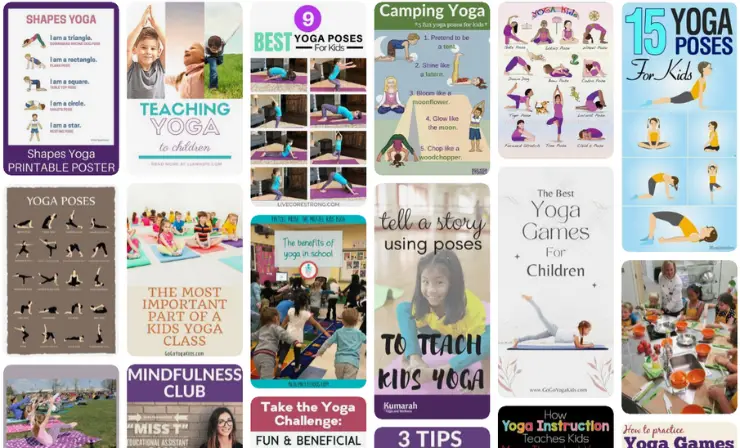
Difficulty Level: Low
Cost: Low
What Does It Teach: Introduces students to yoga postures, breathing exercises, and mindfulness techniques to promote physical fitness, flexibility, and stress relief.
Introducing yoga as a middle school elective offers a gateway to a spectrum of benefits that cater to diverse student needs. From finding solace after demanding days to enhancing physical prowess for extracurricular sports, this elective unfurls a world of holistic well-being and self-discovery.
Yoga serves as an oasis of tranquility amidst the hustle of academic life. It provides students with a toolkit of relaxation techniques, empowering them to navigate stress and anxiety. The practice not only nurtures mindfulness but also cultivates emotional resilience—an invaluable skill that extends far beyond the classroom.
For aspiring athletes, yoga becomes a cornerstone of strength and flexibility. Asanas and poses fuel physical endurance, helping students excel in their chosen sports outside school hours. The balance and coordination honed on the mat seamlessly translate to improved performance on various playing fields.
Beyond the physical and mental realms, yoga fosters a sense of unity and community. The collective practice encourages collaboration and mutual support, nurturing a positive classroom environment.
Yoga’s versatility lies in its potential to serve each student’s unique needs, whether they seek relaxation, flexibility, or camaraderie. This elective shapes more than just bodies—it nurtures minds, spirits, and a culture of well-rounded growth. By embracing yoga, middle schools not only introduce a source of resilience but also set the stage for students to embark on a lifelong journey of holistic health and self-awareness.
Additionally, you can watch this video discussing the incorporation of yoga in the classroom:
5. Cooking
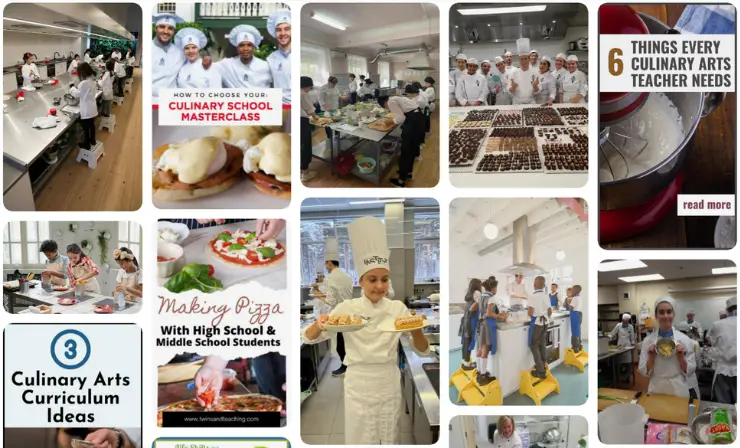
Difficulty Level: Low to Middle
Cost: Middle
What Does It Teach: Teaches basic cooking skills, meal preparation, and kitchen safety, helping students become more self-sufficient and knowledgeable about food.
Rekindling a vanishing tradition, the revival of cooking as a middle school elective is a culinary call to arms. In an era marked by fleeting trends, this course stands as a timeless homage to the joy of creating sustenance and artistry from scratch. Amidst the clatter of utensils and the aroma of freshly baked creations, students embark on a journey that transcends the ordinary and sows the seeds of lifelong culinary passion.
Cooking is more than combining ingredients; it’s a sensory symphony that engages sight, smell, taste, and touch. Within the confines of the kitchen, students unveil their inner chefs, fusing creativity and technique to craft delectable masterpieces. From sweet to savory, every dish becomes an ode to innovation and self-expression.
Beyond the culinary canvas, cooking becomes a vehicle for service. Through communal projects, students wield their skills to nourish both the soul and the community. Preparing meals for those in need nurtures empathy and the understanding of the impact their craft can have beyond the classroom.
Cooking’s revival is an invitation to weave tradition into the modern fabric, rekindling the fires of culinary artistry. As spatulas meet pans and flour takes flight, students find themselves at the crossroads of creativity, technique, and compassion. This elective invites them to shape their own culinary narrative, one where each dish is a stroke of genius, and each bite is a testimony to their boundless potential.
Here’s a video detailing a cooking elective program:
6. Sewing
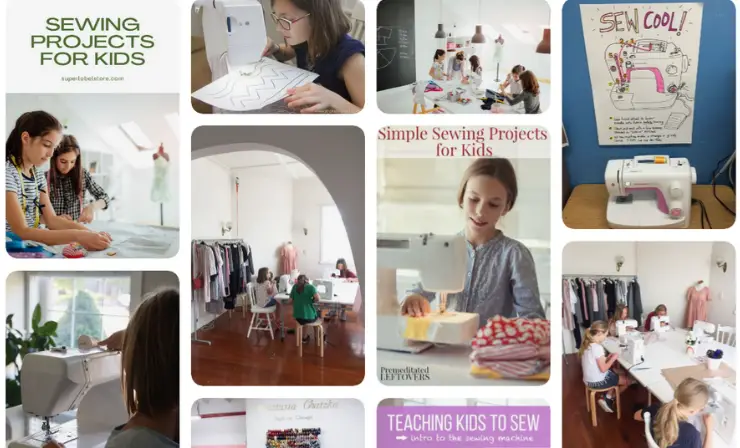
Difficulty Level: Low to Middle
Cost: Middle
What Does It Teach: Teaches basic sewing techniques, including how to use a sewing machine and hand-sew, allowing students to create simple fabric projects.
Sewing, a thread that stitches together both practical skills and academic enrichment, stands as a unique and rewarding middle school elective. Beyond the fabric and needles lies a journey that intertwines artistry, problem-solving, and cross-disciplinary learning.
In the realm of sewing, students not only create tangible garments but also weave the strands of geometry, mathematics, and spatial reasoning. The act of measuring and cutting patterns fosters a hands-on understanding of mathematical concepts. Precision becomes a guiding principle, as every stitch and fold requires meticulous attention to detail—a fundamental practice in both sewing and analytical thinking.
Moreover, sewing nurtures historical and cultural awareness. As students work with different fabrics and styles, they delve into the stories of textiles and clothing across eras and societies. This elective becomes a time machine that transports them through history, connecting the past to the present through the art of the needle.
Sewing fosters patience and resilience, as the transformation from fabric to wearable art necessitates trial, error, and innovation. Through each seam and hem, students cultivate skills that transcend the sewing room and extend into their academic journey.
Beyond the finished product, sewing is a tapestry where craftsmanship, problem-solving, and cultural exploration converge. This elective ensures that students walk away not only with their handcrafted creations but also with a richer understanding of how various academic threads are interwoven to create a well-rounded education.
Here’s a video guiding you on how to initiate a sewing club in school:
7. Theatre

Difficulty Level: Low to Middle
Cost: Middle
What Does It Teach: Teaches acting, stagecraft, and production elements, helping students develop confidence, public speaking skills, and an appreciation for the performing arts.
Amidst a tapestry of unique middle school electives, theatre emerges as a timeless gem that holds a unique place in fostering creativity, confidence, and camaraderie. While often associated with high school, the middle school years provide an opportune juncture to illuminate the stage and kindle the flames of young actors’ passion.
Theatre goes beyond scripted lines; it becomes a platform for self-discovery and self-expression. As students step onto the stage, they transcend their comfort zones, crafting characters and narratives that shape their own identities. With every delivery of lines and every moment of stage presence, confidence blossoms, painting a vivid landscape of newfound self-assuredness.
Collaboration and communication thrive in the theatre realm. The ensemble becomes a microcosm of teamwork, as students collectively breathe life into stories. Through improvisation and scene work, students not only forge connections but also strengthen their ability to listen, respond, and adapt—a skillset that resonates far beyond the spotlight.
From Shakespearean classics to original productions, theatre unfolds a canvas of exploration and creativity. Middle schoolers dabble in a myriad of roles, from actors to directors and set designers, fostering a holistic appreciation for the performing arts. The curtain rises on an experience that isn’t just about putting on a play—it’s about cultivating life skills that will shape confident, collaborative, and expressive individuals, both on and off the stage.
Here’s a video featuring one of the theater activities you can try in the acting club:
8. Photography

Difficulty Level: Middle
Cost: Middle to High
What Does It Teach: Teaches the fundamentals of photography, including how to use cameras, compose shots, and manipulate lighting to create visually appealing images.
In the midst of middle school’s structured courses, a yearning for creativity often goes unfulfilled. Recognizing this vital need, the introduction of a creative haven becomes imperative—an avenue where students can unleash their artistic spirits. Photography emerges as a transformative elective, a canvas where their imagination takes flight and artistry finds a lens through which to shine.
Photography isn’t merely about capturing images; it’s about discovering one’s unique perspective and crafting stories through the camera’s eye. By allowing students the space to navigate this artistic terrain, a world of boundless possibilities unfolds. Group projects foster collaboration, inspiring the exchange of ideas and the synthesis of diverse viewpoints. Individual projects, on the other hand, provide an intimate platform for self-expression.
Amid the click of shutters and the play of light, students transcend the confines of routine learning. They cultivate an acute awareness of their surroundings, honing their observation skills and nurturing a profound appreciation for aesthetics. Through lenses and frames, they weave narratives that communicate their thoughts, emotions, and experiences.
Photography isn’t solely about art; it’s about empowering students to discover and communicate in their unique visual language. This elective bridges the gap between structured academics and boundless creativity, illuminating the way to self-discovery and artistic enlightenment. Middle schoolers embarking on this journey capture more than just images; they capture the essence of their own creative potential.
You can also view this video highlighting photography as a school elective:
9. Visual Art
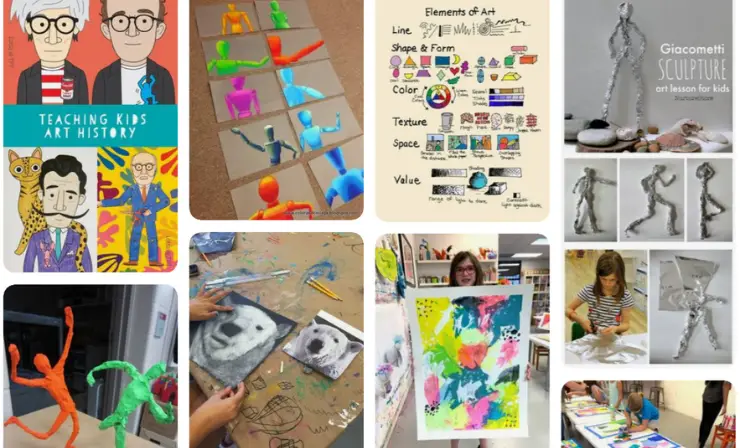
Difficulty Level: Middle
Cost: Middle to High
What Does It Teach: Teaches various art techniques and mediums, allowing students to explore their creativity through drawing, painting, sculpture, and more.
In the landscape of middle school education, the provision of diverse and imaginative electives stands as a cornerstone. Among these, the visual art elective unfurls a vibrant canvas of exploration and learning, spanning ancient histories to modern creativity.
Visual art isn’t merely about brush strokes and colors; it’s a journey through time and culture. As students delve into art history, they traverse the epochs, unraveling the stories behind the canvases. The past comes alive as they discover the masters and movements that have shaped human expression.
Yet, this elective goes beyond the pages of history books. It’s a sanctuary where creativity thrives, offering students a palette of possibilities to manifest their unique visions. From sketching to painting, sculpting to digital design, each medium becomes a conduit for self-expression and ingenuity.
Individual projects become a reflection of their inner worlds—a platform to explore their thoughts, feelings, and dreams. The creative process nurtures problem-solving, critical thinking, and perseverance, skills that transcend the art studio and permeate all facets of life.
By embracing the visual art elective, middle schools not only provide an opportunity to study the tapestry of human creativity but also empower students to weave their own threads into this rich fabric. The brushes and chisels become tools for sculpting not only clay and canvas but also the foundations of well-rounded, innovative individuals.
Here’s a video that explores visual art as an elective option:
10. Foreign Languages
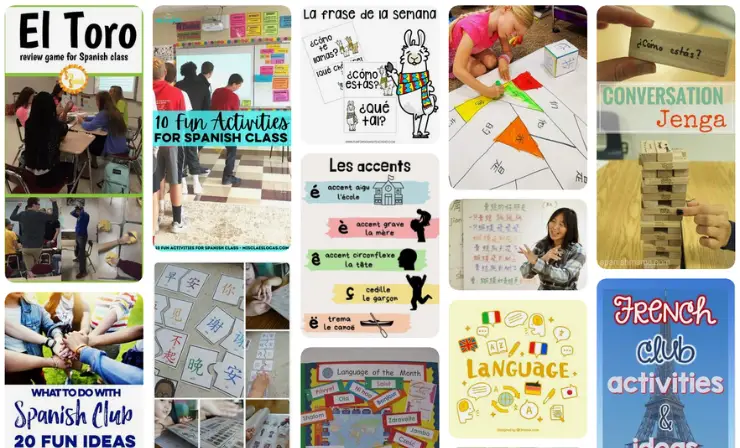
Difficulty Level: Middle
Cost: Middle to High
What Does It Teach: Teaches the basics of a foreign language, including vocabulary, grammar, and cultural aspects, aiming to develop communication skills in a different language.
In the diverse tapestry of middle school electives, a language course emerges as a gateway to cultural awareness and intercultural understanding. It offers students a transformative journey that transcends mere words, guiding them towards a deeper appreciation of the world’s rich diversity.
Language isn’t solely a means of communication; it’s a window into different cultures, traditions, and perspectives. Through language electives, students embark on a voyage that broadens their horizons, fostering empathy and breaking down barriers.
As students immerse themselves in a new language, they unlock the doors to intercultural communication. They learn not only vocabulary and grammar but also the nuances that shape different ways of thinking and expressing ideas. These skills become bridges connecting them to people from varied backgrounds.
Beyond the linguistic acquisition lies a profound respect for cultural differences. Language isn’t isolated; it’s intertwined with history, art, cuisine, and beliefs. Students are exposed to a rich tapestry of traditions, and as they decode language, they decode the world around them.
By embracing a language elective, middle schools provide a platform for students to become global citizens. They learn that understanding and appreciating diversity are vital in an interconnected world. This elective isn’t just about conjugating verbs—it’s about cultivating individuals who navigate cultures with curiosity, empathy, and respect. As they master the language, they master the art of building bridges between hearts and minds.
Here is a compilation of speaking activities that can be incorporated into a foreign languages elective:
11. Tae Kwon-Do

Difficulty Level: Middle to High
Cost: High
What Does It Teach: Teaches the Korean martial art of Tae Kwon-Do, including self-defense techniques, physical fitness, discipline, and respect.
Offering a distinctive and captivating avenue, Tae Kwon-Do emerges as a compelling middle school elective that ignites students’ interest and fosters growth, even within a limited timeframe. This martial art encapsulates more than physical techniques—it embodies values of discipline, respect, and personal development.
Tae Kwon-Do isn’t solely about kicks and punches; it’s a transformative journey that unfolds week by week. Even a brief time frame becomes a stepping stone for students to build upon, nurturing physical fitness, mental agility, and emotional well-being.
Within the dojo, students cultivate more than fighting prowess; they cultivate a sense of respect for self and others. The structured practice instills discipline and perseverance—qualities that have a ripple effect beyond the training mat.
From week to week, students witness their progress, a testament to their dedication and effort. This growth—both physical and personal—becomes a wellspring of confidence, resilience, and self-belief. As they master new techniques and navigate challenges, they realize that incremental steps can lead to profound transformation.
Tae Kwon-Do transcends the punches thrown; it’s an exploration of character, values, and the boundless potential within. This elective isn’t just about the martial art—it’s about crafting individuals who stand strong, both on the mat and in the world. Even in a brief time frame, the seeds of growth are sown, ensuring that middle schoolers emerge not only as skilled practitioners but as empowered individuals ready to face the challenges that lie ahead.
Here’s a video showcasing a Tae Kwon-Do demonstration in a middle school setting:
12. Engineering
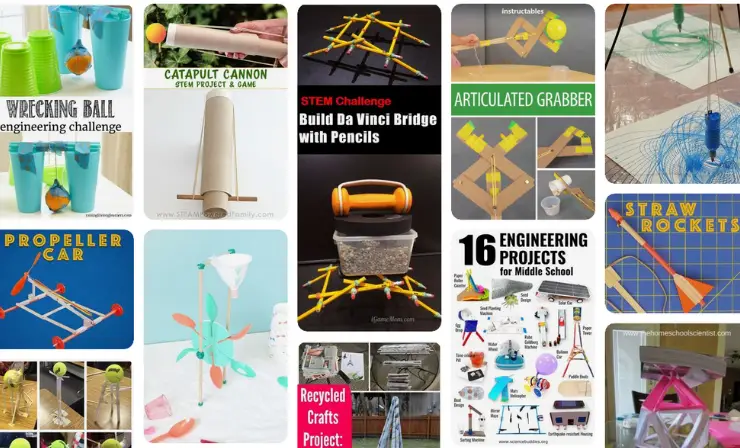
Difficulty Level: Middle to High
Cost: High
What Does It Teach: Introduces students to basic engineering principles, problem-solving, and hands-on projects that involve designing and building structures or devices.
Amidst the realm of middle school electives, an inspiring opportunity arises—one that empowers students to unleash their creativity and tackle real-world challenges. With the guidance of dedicated educators, the engineering elective beckons young minds to explore, innovate, and build a future of endless possibilities.
Under the watchful eye of experienced mentors, students delve into a dynamic world where imagination knows no bounds. Hands-on engineering activities transcend the conventional classroom, transforming ideas into tangible solutions. From constructing prototypes to troubleshooting mechanisms, every endeavor becomes a canvas for innovation and problem-solving.
Through engineering, students embark on a transformative journey that sharpens not only their technical skills but also their ability to collaborate and communicate effectively. The process of crafting solutions nurtures critical thinking, perseverance, and the courage to embrace failure as a stepping stone to success.
This elective is more than nuts and bolts; it’s an immersive experience that equips students with the tools to reshape their world. As they bring their visions to life, they cultivate a deep appreciation for the interplay of science, technology, and creativity.
With every project undertaken, students discover the incredible power of their ideas and their capacity to make a tangible impact. This engineering journey transcends the classroom, evolving into a lifelong adventure fueled by curiosity, innovation, and the audacity to reimagine what is possible.
You can also watch this video providing insights into engineering as a middle school elective:
13. Microscopy

Difficulty Level: Middle to High
Cost: High
What Does It Teach: Introduces students to microscopy and the microscopic world, teaching them how to use microscopes and understand cell structures and other small-scale phenomena.
Amidst the spectrum of middle school electives, a doorway to the world of science emerges as a vital stepping stone for our future scientists and doctors. Offering students the chance to venture beyond their classroom confines, this elective becomes a springboard for early exploration, igniting the flames of curiosity and passion.
Science isn’t just a subject; it’s a gateway to understanding the mysteries of the universe. Through hands-on experimentation and discovery, students grasp the fundamentals of scientific inquiry, laying the groundwork for future breakthroughs.
Beyond textbooks, this elective becomes a realm where budding scientists can spread their wings. It’s an opportunity to delve into topics that pique their interest, from biology to chemistry, physics to astronomy. As they engage with practical applications, they not only learn techniques but also uncover the joy of unraveling nature’s secrets.
The importance of this elective lies not just in nurturing future careers but in fostering a lifelong love for learning. By providing young minds with the space to explore and question, middle schools instill a sense of wonder and a thirst for knowledge that extends far beyond the classroom walls.
As students embrace this scientific journey, they sow the seeds of curiosity that have the potential to flourish into profound discoveries. This elective isn’t just about equations and experiments; it’s about cultivating the next generation of inquisitive minds poised to shape the world of science and medicine.
Here’s a video showcasing a microscope lab in a middle school setting:
14. Orchestra
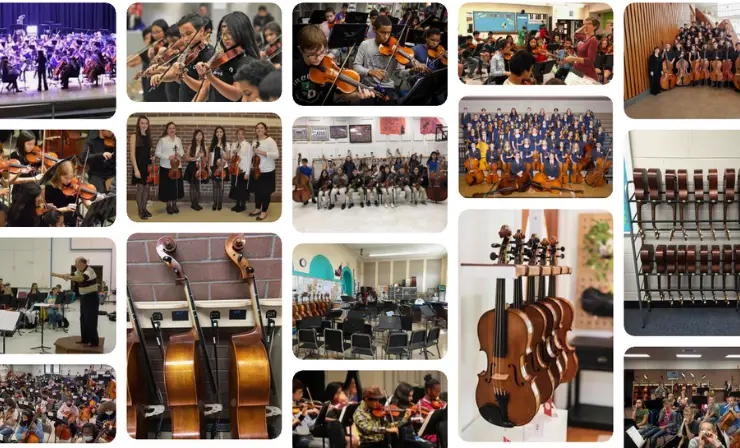
Difficulty Level: High
Cost: High
What Does It Teach: Teaches students how to play musical instruments as part of an ensemble, helping them develop musical skills, teamwork, and an understanding of music theory.
In the realm of middle school electives, orchestra stands as a harmonious journey that orchestrates not just music, but also personal growth and collective artistry. Through the strings, woodwinds, and brass, students embark on a musical odyssey that shapes their character and ignites their passion.
Orchestra transcends individual notes; it’s a symphony of collaboration where diverse instruments unite under the guidance of a conductor’s baton. Middle schoolers become part of a melodious ensemble, learning the art of teamwork, patience, and the importance of synchronicity.
This elective offers more than melodies; it offers a playground for discipline and dedication. As students practice scales, master challenging pieces, and perform in front of an audience, they cultivate resilience, concentration, and the rewards of persistent effort.
Music isn’t confined to the stage; it permeates every facet of life. The melodies learned in orchestra echo through classrooms, hallways, and beyond, elevating students’ creativity and cognitive development.
In the orchestra, students not only master their instruments, but they also compose the score of their own growth. This elective nurtures a sense of accomplishment and belonging, echoing with the belief that every note played contributes to a larger, harmonious whole. As middle schoolers embrace the strings, keys, and bows, they find themselves part of a symphony that resonates with the cadence of their potential.
Here’s a video that offers an inside look into an orchestra elective in middle school:
Useful Resources
- Music Education Programs for Students from the National Association for Music Education
- Middle School Theatre Programs from the American Alliance for Theatre and Education
- School Gardening Programs from the National Gardening Association
- Information and Resources for Science, Technology, Engineering, and Mathematics (STEM) Education Initiatives from the STEM Education Coalition
Conclusion
In the tapestry of middle school education, electives serve as vibrant threads weaving a diverse and enriching experience. From nurturing creativity to fostering cultural awareness, from honing skills to cultivating passions, these elective options empower students to shape their unique paths and embark on journeys of growth and discovery.
- Overview of 22 Low-Code Agencies for MVP, Web, or Mobile App Development - October 23, 2024
- Tips to Inspire Your Young Child to Pursue a Career in Nursing - July 24, 2024
- How Parents Can Advocate for Their Children’s Journey into Forensic Nursing - July 24, 2024



